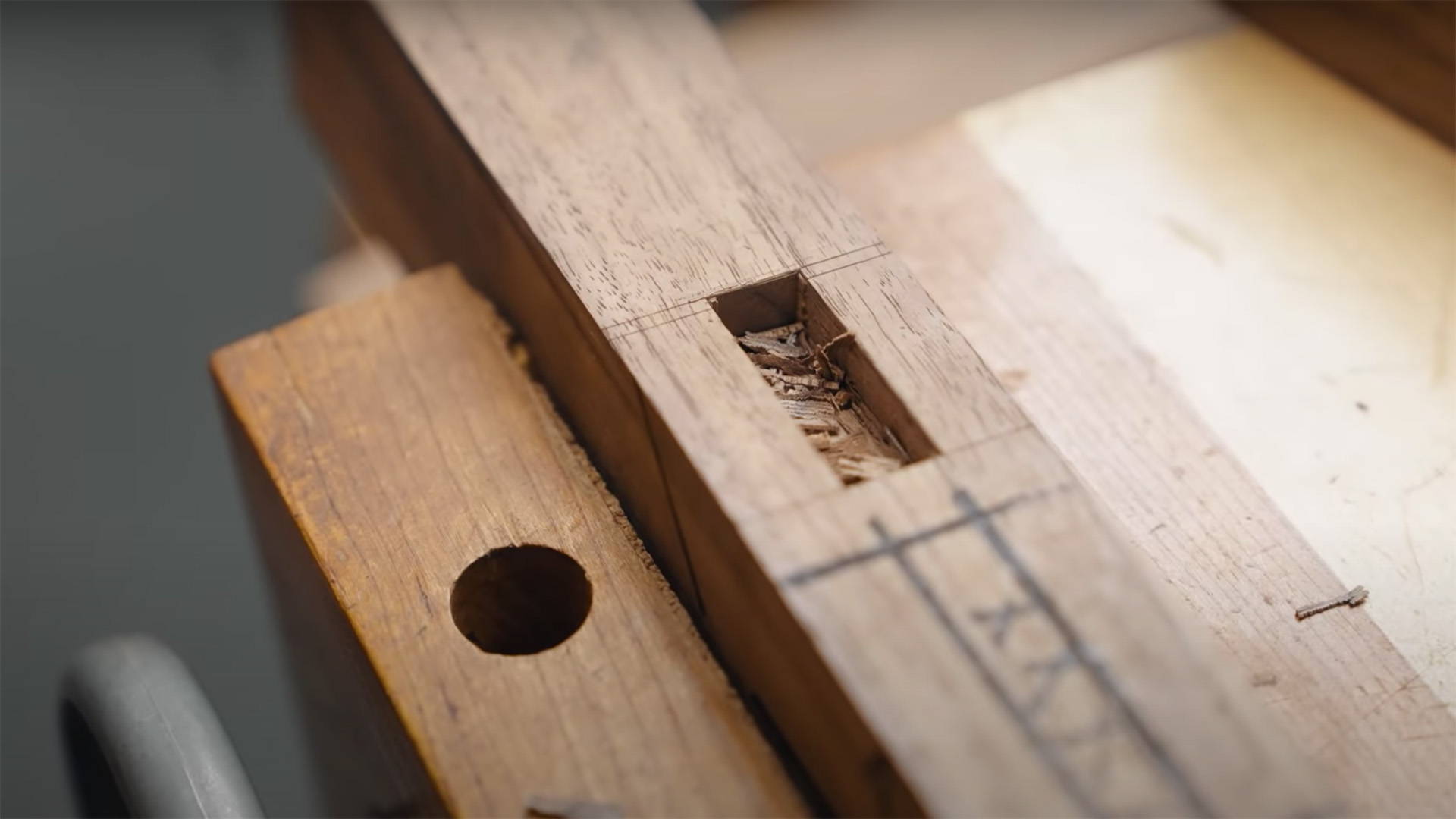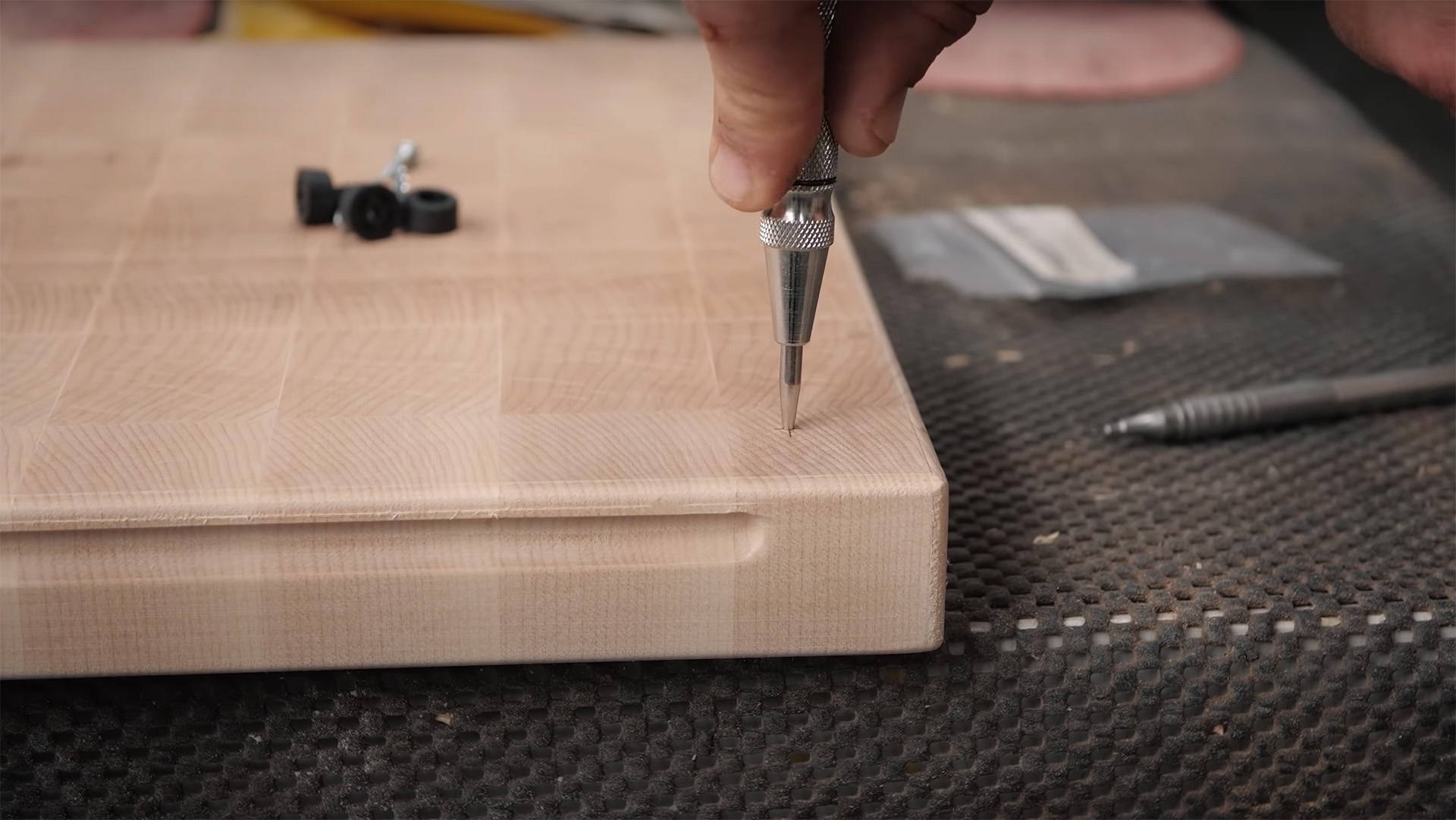The hardest board to flatten on a jointer is one that twists.
If you don't do it right, you can end up taking off more material than necessary…
Turning your beautiful lumber into a beautiful potato chip.
But flattening twisted boards doesn’t have to be a challenge.
Because today, I’m giving you 3 tips to make flattening twisted boards a breeze.
(Disclaimer: Potato chips not included).
FINDING THE HIGH CORNERS ON TWISTED BOARDS
How can you tell if a board is twisted?
Set it on a flat surface (like your jointer) and see how it rocks.
If the board rocks on two diagonally opposite corners, the board has a twist.
And those two corners that don’t lift from the flat surface below? Those are your high spots.
Identifying the high corners is crucial the tips below…
So keep them in mind — or label them with a pencil.
1. CUT PIECES AS SHORT AS POSSIBLE
Jointer rule of thumb: Work with the shortest boards you can.
And this is especially true for twisted boards.
The shorter the board, the less exaggerated the twist.
So instead of taking lumber straight to the jointer, start by cutting it into shorter pieces…
Keeping in mind the dimensions of the components in your project.
2. HIT HIGH CORNERS WITH A HAND PLANE
For boards with extreme, M. Night Shyamalan-level twists, start with a hand plane (spoiler alert: it’s aliens).
First identify the high corners, then flip the board upside down. Imagine a line connecting the two high corners.
You’ll now make a diagonal pass from one high corner to the other, following that imaginary line.
Make a pass or two on both sides of your imaginary line. Then test the board by placing it back on a flat surface.
If the corner-rocking is gone — or at least heavily minimized — you’re ready for the jointer.
(Want to really nerd out on hand plane technique? Use some winding sticks and read this).
3. SHIFT PRESSURE ON THE JOINTER OUTFEED TABLE
For lighter twists, you can go straight to the jointer.
Again, imagine a line running from one high corner to the other. But this time on the top of the board.
As you run the board over the jointer and onto the outfeed table, keep pressure along this line.
Basically, you’ll start with a push paddle on one high corner, and end with it on the opposite high corner.
After each pass, check to see if the twist is gone.
Once it is, you can joint the board face like you normally would.
By following these tips, you'll be able to flatten even the most twisted boards (the kind that quote Machiavelli)…
And easily make the most out of your lumber.
Want more tips on proper jointer use? Read this.
Got any of your own tips for flattening twisted boards? Let us know in the comments below!
Follow us on Instagram @katzmosestools, on TikTok @katzmoseswoodworking, and check out my YouTube channel for more great woodworking content...
And as always, STAY SAFE IN THE SHOP!












3 comments
Jason Doust
Thanks Jonathan. Timely advice for my reclaimed Australian hardwood project, now that I’ve pulled the ancient heavy gauge twist lock nails out. (Driven in by the gods!)
Thanks Jonathan. Timely advice for my reclaimed Australian hardwood project, now that I’ve pulled the ancient heavy gauge twist lock nails out. (Driven in by the gods!)
Barry Ferrell
I agree with Steve’s comment.
I agree with Steve’s comment.
Steve Eikenberry
Push sticks…you are always so safety oriented but you sell/promote a push stick that only pushes from behind and DOES NOT hold the lumber down on the table…as noted at the bottom of your tip on jointing twisted boards in your 4 Piece Safety Kit. Why not promote a push stick that does both hold down AND push forward? In our The Villages, FL woodshop club, with some 1700 members, that’s the only push stick we allow…just sayin’
Push sticks…you are always so safety oriented but you sell/promote a push stick that only pushes from behind and DOES NOT hold the lumber down on the table…as noted at the bottom of your tip on jointing twisted boards in your 4 Piece Safety Kit. Why not promote a push stick that does both hold down AND push forward? In our The Villages, FL woodshop club, with some 1700 members, that’s the only push stick we allow…just sayin’